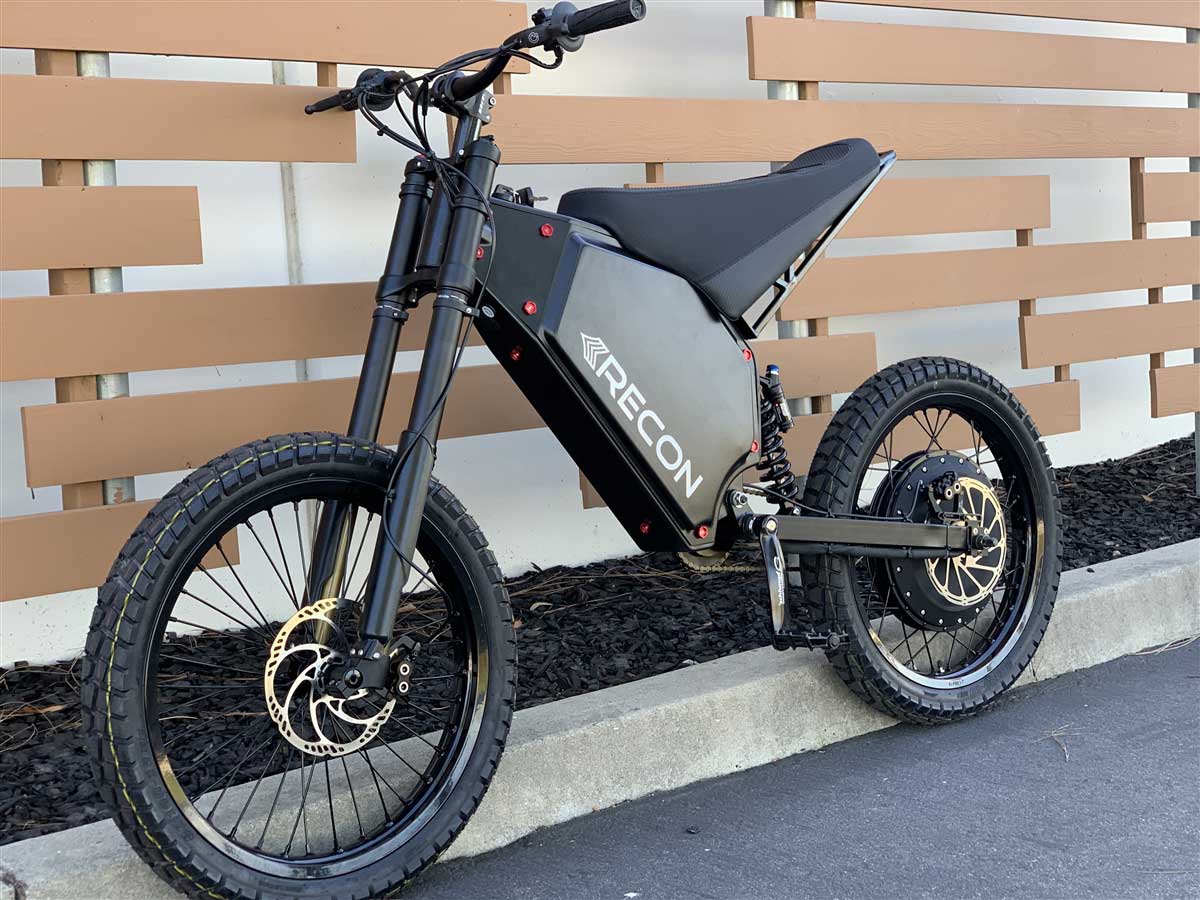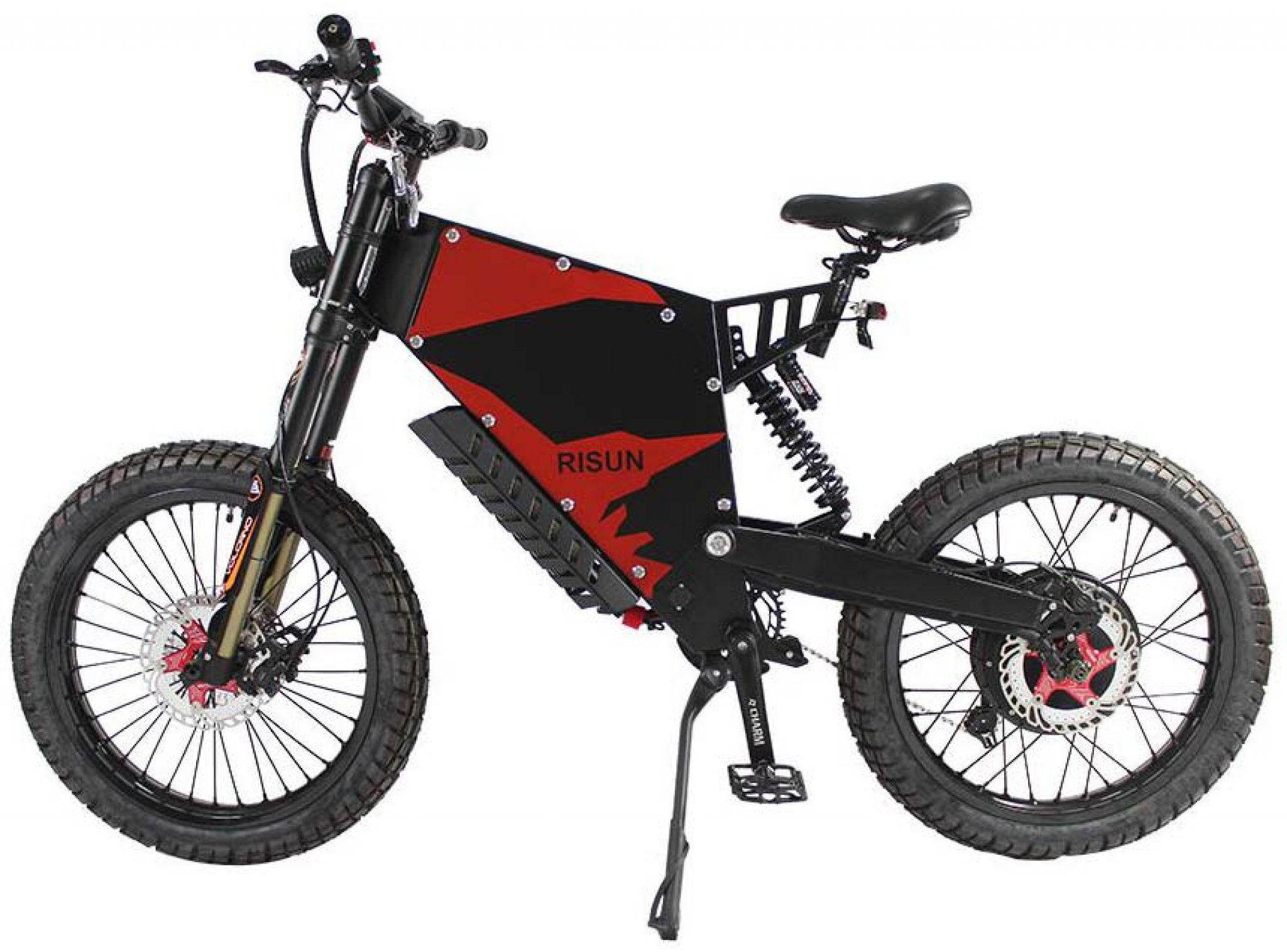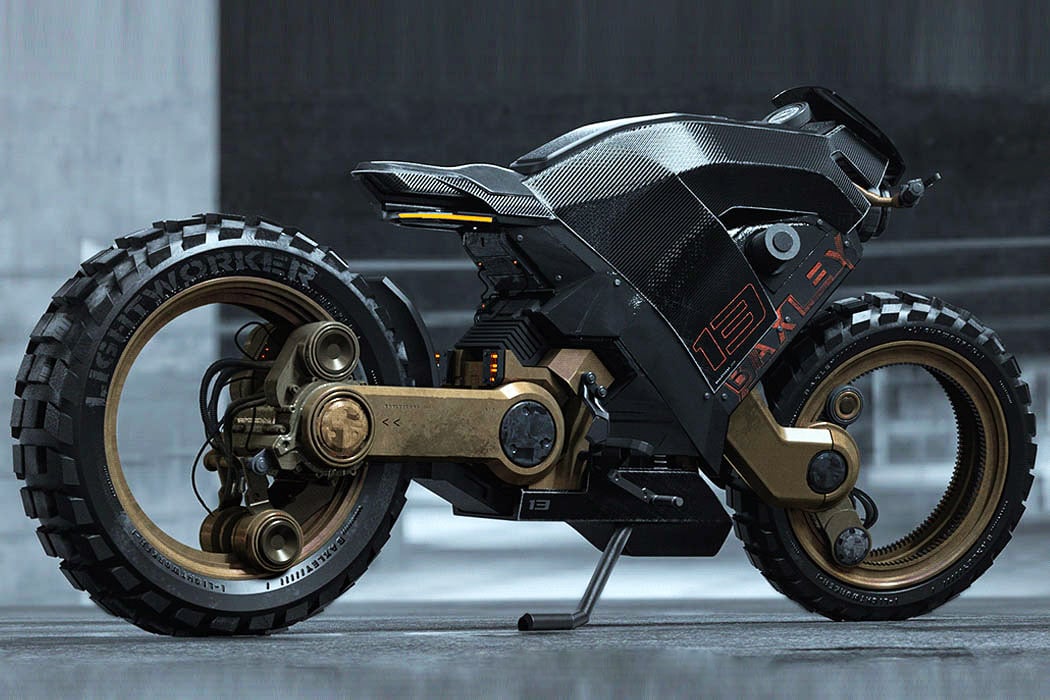What to Consider When Choosing a Bike with an Electric Motor
Electric bikes, also known as e-bikes, have gained significant popularity in recent years due to their convenience, eco-friendliness, and versatility. A bike with an electric motor offers numerous advantages, such as increased range, reduced physical effort, and a more enjoyable riding experience. However, selecting the ideal e-bike requires careful consideration of several factors.
First and foremost, it is crucial to evaluate the motor power of the electric bike. Typically, motor power ranges from 250 to 750 watts, with higher wattage providing more assistance and better performance, especially on hilly terrain. A powerful motor ensures a smoother ride and enables the rider to tackle challenging inclines with ease.
Battery life is another essential factor to consider when choosing a bike with an electric motor. A high-capacity battery allows for longer rides and less frequent charging. Most e-bikes use lithium-ion batteries, which offer a balance between weight, cost, and capacity. When evaluating battery life, consider the distance you typically travel and the frequency at which you can recharge the battery.
The type of bike is also a significant consideration when selecting an electric bike. E-bikes come in various styles, including mountain, road, commuter, and cargo bikes. Each type caters to specific needs and preferences, so it is vital to choose one that aligns with your intended use. For instance, if you plan to use the e-bike for commuting, a lightweight, compact model with integrated lights and fenders would be ideal. Conversely, if you enjoy off-road adventures, a robust, high-powered electric mountain bike would be more suitable.
Lastly, consider the overall quality and price of the electric bike. While it may be tempting to opt for a budget-friendly model, investing in a high-quality e-bike can ensure better performance, durability, and long-term value. Research various brands, read customer reviews, and compare features to find the best bike with an electric motor for your needs and budget.
Top Electric Bikes in the Market: A Closer Look
When searching for the perfect bike with an electric motor, it is crucial to consider high-quality models that cater to various needs and preferences. Here are some of the top electric bikes available in the market:
Specialized Turbo Vado
The Specialized Turbo Vado is a versatile electric bike designed for urban commuting. It boasts a powerful 350-watt motor, providing impressive acceleration and hill-climbing capabilities. The bike features a 710Wh battery, ensuring an extended range and less frequent charging. However, the Turbo Vado’s high-performance components contribute to its premium price point.
Trek Allant+
The Trek Allant+ is a well-rounded electric bike suitable for various uses, including commuting, leisure rides, and exercise. It is equipped with a 250-watt motor and a 500Wh battery, offering a balance between power and range. The Trek Allant+ features a comfortable riding position, making it an excellent choice for long-distance rides. While not the most affordable option, its versatility and performance justify the investment.
Giant Road E+
The Giant Road E+ is a high-performance electric road bike, perfect for cycling enthusiasts seeking a powerful and efficient ride. It features a 250-watt motor and a 500Wh battery, ensuring a smooth and responsive ride. The Giant Road E+ is lightweight and agile, making it an excellent choice for hilly terrain and long-distance rides. However, its high-end components result in a higher price tag compared to other electric bikes.
When selecting a bike with an electric motor, it is essential to consider factors such as motor power, battery capacity, and price range. These top electric bikes cater to various needs and preferences, ensuring a suitable option for every rider. By carefully evaluating each model, you can find the perfect electric bike to enhance your cycling experience.
How to Choose the Right Electric Bike for Your Needs
Selecting the ideal bike with an electric motor involves careful consideration of various factors to ensure a perfect match for your preferences and requirements. Follow this step-by-step guide to help you make the best decision:
Step 1: Define Your Intended Use
Determine how you plan to use your electric bike. Will it be for commuting, leisure rides, or exercise? Each use case may require specific features and components, so clarifying your intentions is crucial.
Step 2: Assess the Terrain
Consider the terrain you will be riding on. Flat surfaces require less powerful motors and smaller batteries, while hilly terrain demands more robust motors and larger batteries for optimal performance.
Step 3: Establish a Budget
Electric bikes come in various price ranges, so it is essential to establish a budget before making a purchase. High-quality electric bikes with electric motors typically range from $1,500 to $5,000, depending on the features and components.
Step 4: Evaluate Motor Power
Motor power is a critical factor when choosing a bike with an electric motor. For urban commuting and leisure rides, a 250-watt motor should suffice. However, for hilly terrain or long-distance rides, consider a more powerful motor, such as 350 watts or higher.
Step 5: Consider Battery Capacity
Battery capacity impacts the range of your electric bike. For daily commutes or long-distance rides, opt for a bike with a larger battery capacity, such as 500Wh or higher. For shorter rides, a smaller battery capacity may be sufficient.
Step 6: Assess Bike Weight
Electric bikes can be heavier than traditional bikes, making them more challenging to maneuver and transport. If weight is a concern, look for lightweight electric bikes, typically made from aluminum or carbon fiber frames.
Step 7: Research Local Laws and Regulations
Familiarize yourself with local laws and regulations regarding electric bikes, including speed limits, age restrictions, and helmet requirements. Adhering to these rules ensures a safe and enjoyable riding experience.
Step 8: Explore Accessories
Consider various electric bike accessories, such as bike racks, lights, and locks, to enhance your riding experience. These add-ons can improve convenience, safety, and security.
By following this guide, you can choose the perfect bike with an electric motor tailored to your specific needs and preferences. Remember to prioritize factors like motor power, battery life, and bike type when making your decision.
Maintaining Your Electric Bike: Tips and Tricks
Proper maintenance is essential to ensure the longevity and optimal performance of your bike with an electric motor. By following these tips and tricks, you can keep your electric bike in top condition:
1. Charge the Battery Correctly
To maintain your electric bike’s battery, follow the manufacturer’s guidelines for charging. Avoid letting the battery fully discharge before recharging, as this can reduce its lifespan. Store the battery with a partial charge during extended periods of non-use.
2. Clean the Bike Regularly
Clean your electric bike after every ride, especially if it has been exposed to mud, dirt, or saltwater. Use a mild detergent and a soft cloth to avoid damaging the bike’s components. Dry the bike thoroughly after cleaning to prevent rust and corrosion.
3. Lubricate Moving Parts
Lubricate the chain, gears, and other moving parts regularly to ensure smooth operation and prevent wear and tear. Use a high-quality bicycle lubricant to maintain the bike’s performance and longevity.
4. Inspect the Tires
Check the tire pressure and condition regularly. Inflate the tires to the recommended pressure and replace them if they show signs of wear or damage. Properly maintained tires ensure a safer, more comfortable ride and reduce the risk of punctures or blowouts.
5. Tighten Loose Components
Periodically inspect the bike’s components, such as pedals, handlebars, and brakes, for tightness. Tighten any loose components to prevent damage or accidents caused by parts coming loose during rides.
6. Store the Bike Properly
Store your electric bike in a dry, secure location, away from extreme temperatures and direct sunlight. Hang the bike on a wall mount or store it on a stand to prevent damage to the tires and frame.
7. Schedule Regular Servicing
Have your electric bike professionally serviced at least once a year to ensure all components are functioning correctly. A professional mechanic can identify and address potential issues before they become severe problems.
By following these maintenance tips, you can keep your bike with an electric motor in excellent condition and enjoy a safe, enjoyable riding experience. Regular maintenance not only extends the lifespan of your electric bike but also helps maintain its performance and value.
Electric Bike Laws and Regulations: What You Need to Know
Understanding the laws and regulations surrounding electric bikes is crucial to ensure a safe and legal riding experience. This section provides an overview of the legal aspects of using a bike with an electric motor, focusing on the United States and Europe.
United States
In the United States, electric bikes are classified into three categories based on their motor power and top speed:
- Class 1: Pedal-assist electric bikes with a top speed of 20 mph
- Class 2: Throttle-assist electric bikes with a top speed of 20 mph
- Class 3: Pedal-assist electric bikes with a top speed of 28 mph
Laws and regulations vary by state, but generally, Class 1 and Class 2 electric bikes are treated like traditional bicycles, while Class 3 electric bikes may have additional requirements, such as age restrictions and helmet laws. Always check your state’s specific laws before riding.
Europe
In Europe, electric bikes must comply with the European Union’s EN 15194 standard, which specifies requirements for pedal-assist electric bikes with a top speed of 25 kph (15.5 mph). Throttle-assist electric bikes are generally not permitted, except in some countries with specific regulations.
Helmet requirements vary by country, but it is generally recommended to wear a helmet while riding an electric bike. Some European countries, like Germany and Austria, mandate helmet use for electric bikes without pedal assistance. Always check your country’s specific laws before riding.
Speed Limits
Electric bikes are typically limited to a top speed of 20 mph in the United States and 25 kph (15.5 mph) in Europe. However, some high-performance electric bikes can reach higher speeds, which may not be legal in all regions. Always adhere to the local speed limits to ensure a safe and legal riding experience.
Age Restrictions
Age restrictions for electric bikes also vary by region. In the United States, some states require riders to be at least 16 years old to operate a Class 3 electric bike, while in Europe, the minimum age for electric bike use is typically 14 or 16 years old, depending on the country.
Helmet Requirements
Helmet requirements vary by region and class of electric bike. In the United States, some states mandate helmet use for all electric bike riders, while others only require helmets for specific classes or ages. In Europe, helmet use is generally recommended and sometimes mandatory, depending on the country and class of electric bike.
By familiarizing yourself with the local laws and regulations, you can ensure a safe and legal riding experience on your bike with an electric motor. Always adhere to the speed limits, age restrictions, and helmet requirements in your region to enjoy the benefits of electric bikes while minimizing potential risks and legal issues.
Electric Bike Accessories: Enhancing Your Riding Experience
Accessories for electric bikes can significantly improve your riding experience, offering added convenience, safety, and customization. This section introduces various electric bike accessories, explains their benefits, and provides recommendations based on your needs.
Bike Racks
Bike racks for electric bikes allow you to transport your bike with ease, whether on a car, SUV, or RV. Choose a rack designed specifically for electric bikes, as they can accommodate the additional weight and dimensions. Some popular options include hitch-mounted racks, trunk-mounted racks, and roof-mounted racks.
Lights
High-quality lights are essential for safe nighttime riding on a bike with an electric motor. Invest in both front and rear lights to ensure visibility and awareness on the road. Look for lights with long battery life, adjustable brightness settings, and durable mounting systems.
Locks
Secure your electric bike with a reliable lock to prevent theft. Choose a lock suitable for the weight and value of your bike, such as a U-lock, chain lock, or folding lock. For added security, consider using multiple locks or a GPS tracking device.
Bags and Baskets
Bags and baskets provide additional storage space for your electric bike, allowing you to carry groceries, tools, or personal items. Opt for waterproof materials and secure mounting systems to ensure your belongings stay safe and dry during your ride.
Smart Devices
Smart devices, such as cycling computers and range extenders, can enhance your electric bike experience by providing real-time data, navigation, and connectivity. These devices often integrate with your smartphone, allowing you to track your rides, monitor your battery level, and customize your settings.
Comfort and Protection
Enhance your comfort and protection on a bike with an electric motor with accessories like fenders, suspension seats, and handlebar grips. These accessories can improve your riding experience by reducing vibrations, shielding you from the elements, and providing ergonomic support.
By considering these electric bike accessories, you can create a more enjoyable, safe, and convenient riding experience tailored to your needs. Always ensure that the accessories you choose are compatible with your specific electric bike model and designed for the intended use.
Comparing Electric Bikes to Traditional Bikes: Pros and Cons
Electric bikes and traditional bikes each have their unique advantages and disadvantages. Understanding these factors can help you decide which type of bike best suits your needs and preferences. This section compares electric bikes and traditional bikes, highlighting the pros and cons of each.
Cost
Electric bikes: Generally more expensive than traditional bikes, with prices ranging from $1,000 to $10,000 or more. The higher cost is due to the added components, such as the motor, battery, and electronic controls.
Traditional bikes: Less expensive, with prices ranging from a few hundred to a few thousand dollars. They have fewer components and are typically simpler in design.
Maintenance
Electric bikes: Require more maintenance than traditional bikes due to the additional components. Regular maintenance includes checking the battery, motor, and electronic controls, in addition to the standard bike maintenance tasks.
Traditional bikes: Generally require less maintenance, as they have fewer components. Regular maintenance includes checking the brakes, gears, tires, and chain.
Environmental Impact
Electric bikes: More eco-friendly than cars or motorcycles, as they produce no direct emissions. However, they still require electricity for charging, which may come from non-renewable sources.
Traditional bikes: The most eco-friendly transportation option, as they require no fuel or electricity for operation.
Physical Effort
Electric bikes: Reduce the physical effort required for cycling, making them an excellent option for those with limited mobility, health issues, or long commutes. They still provide some exercise, as riders can choose to pedal or use the throttle.
Traditional bikes: Require more physical effort, providing a more intense workout. However, they may be less accessible for those with limited mobility or health issues.
Speed and Range
Electric bikes: Offer increased speed and range compared to traditional bikes, thanks to the motor assistance. Many electric bikes can reach speeds of 20-28 mph and have a range of 20-100 miles, depending on the battery capacity and terrain.
Traditional bikes: Typically have a slower speed and more limited range, depending on the rider’s fitness level and terrain.
By comparing electric bikes and traditional bikes in terms of cost, maintenance, environmental impact, physical effort, and speed/range, you can make an informed decision about which type of bike is best for your needs and lifestyle.
The Future of Electric Bikes: Trends and Innovations
Electric bikes have experienced rapid advancements in technology and design, making them increasingly popular for commuters, leisure riders, and athletes alike. This section explores the future of electric bikes, highlighting emerging trends and innovations that can impact the electric bike industry.
Advancements in Battery Technology
Improvements in battery technology are driving the development of electric bikes with longer ranges, faster charging times, and reduced weight. Innovations like solid-state batteries, lithium-ion polymer batteries, and graphene-enhanced batteries are expected to revolutionize the electric bike industry, offering enhanced performance and a more enjoyable riding experience.
Smart Integration
The integration of smart technology into electric bikes is another growing trend. Features like GPS tracking, Bluetooth connectivity, and mobile app integration enable riders to monitor their bike’s performance, navigate, and customize settings with ease. Additionally, smart integration can improve safety, security, and convenience for electric bike riders.
Improved Motor Design
New motor designs are making electric bikes more efficient, powerful, and quiet. Innovations like mid-drive motors, hub motors, and gearless motors offer improved torque, better weight distribution, and reduced maintenance requirements. As motor technology advances, electric bikes with electric motors are expected to become even more popular and accessible for a wider range of riders.
Customization and Personalization
Customization and personalization are becoming increasingly important in the electric bike market. Manufacturers are offering a wider range of frame sizes, colors, and component options, allowing riders to create a bike that perfectly suits their needs and preferences. Additionally, the growth of the aftermarket accessory industry enables riders to further customize their electric bikes with unique components and features.
Sustainable Manufacturing Practices
As the demand for electric bikes grows, so does the need for sustainable manufacturing practices. Companies are focusing on reducing their environmental impact by using eco-friendly materials, improving energy efficiency, and minimizing waste throughout the production process. This trend not only benefits the environment but also enhances the reputation of electric bike manufacturers and their products.
By staying informed about emerging trends and innovations in the electric bike industry, riders can make more informed decisions about their next bike with an electric motor purchase. As technology continues to advance, electric bikes are expected to become even more efficient, accessible, and enjoyable for riders around the world.








